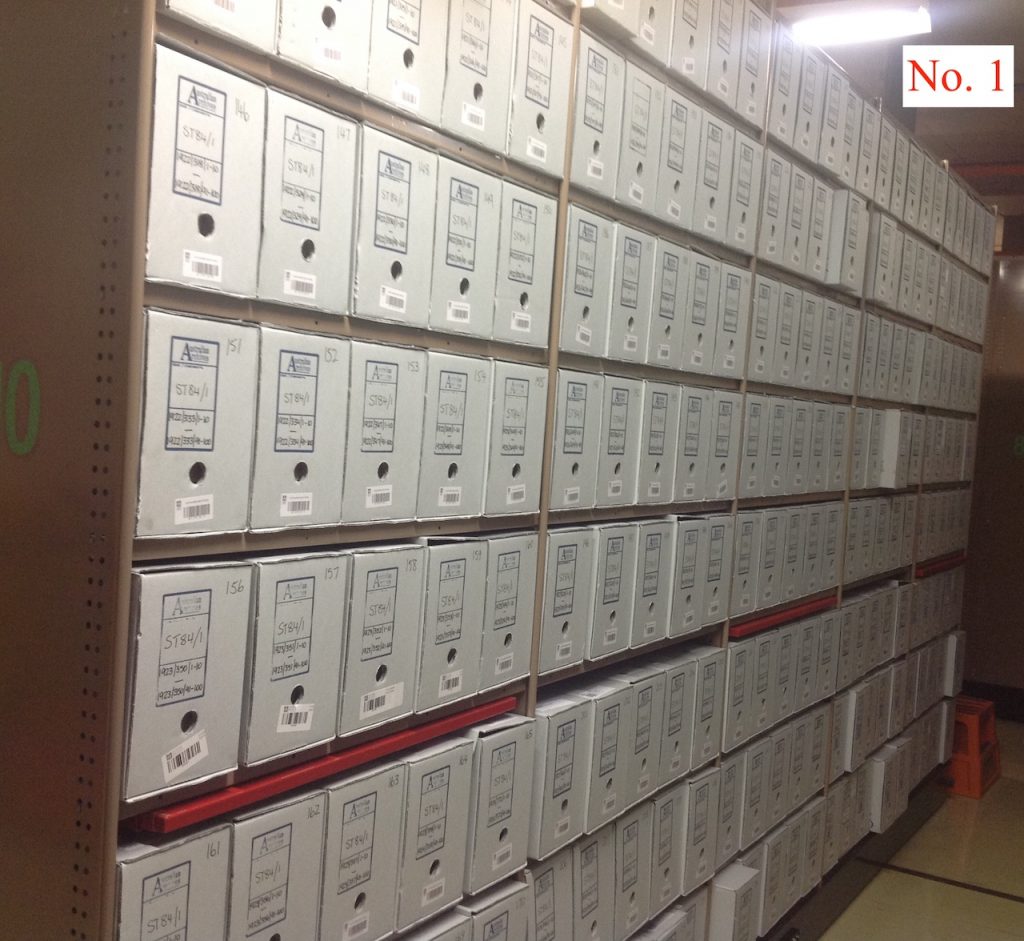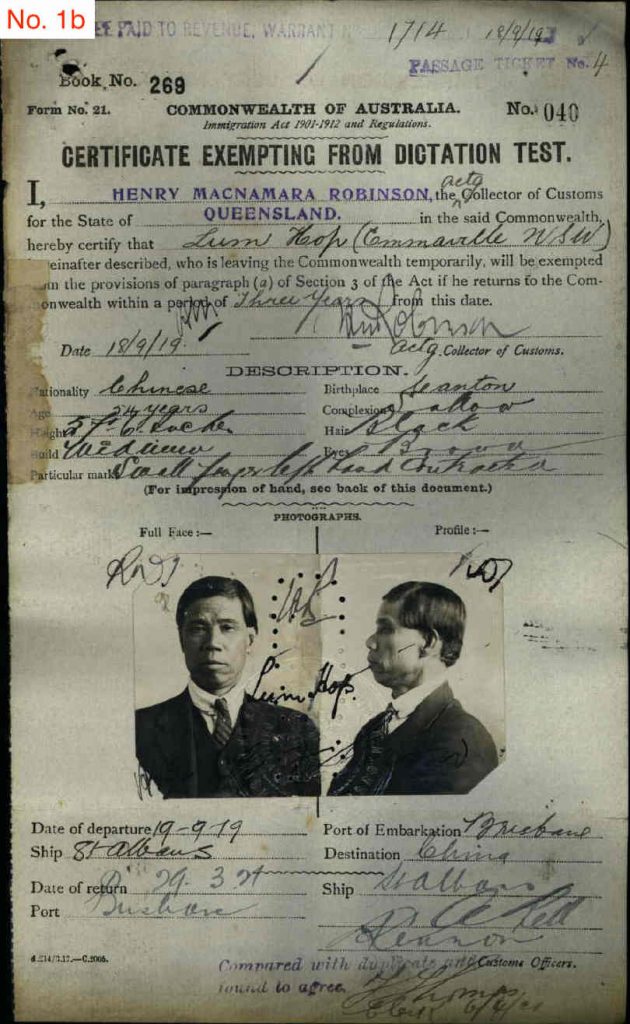
This ‘object’ is in fact a large collection of boxes, some 35 metres in shelf length as archivists record such matters. The 245 boxes in total contain a carefully numbered collection of over 10,000 CEDTs or ‘Certificate’s Exempting From Dictation Test’ (see 1b – a CEDT below). These certificates, with their once familiar but now rather arcane title, are the closest thing we have to the White Australia Policy solidified. While never official policy, it was a near consensus when the Australian Federation was formed in 1901 that the Australian continent should be populated by ‘white’ people, however that should be defined, and regardless of its indigenous inhabitants.
The founding fathers of Australia consequently established a phoney Dictation Test (see No.40) so they could keep out non-white people without actually naming names. The Labor Party had wanted to do this by naming “aboriginal natives of Asia, Africa and the Pacific Islands” as those to be excluded by law, but the Colonial Office in London was afraid of the offense this would cause its many Indian subjects as well as the Japanese and nearly everyone else, (see No. 49).
Every law, however, has its exemptions and in the case of the Immigration Restriction Act of 1901 the exemptions were the many thousands of people, mainly Chinese, who while not ‘white’ were already living in Australia. (See also No.77 for those granted temporary entry.) Thus at the same time the Education (later Dictation) Test was born, so too was born the exemption to this test. In practice, these 10,000 CEDT’s – and these are only the NSW ones – were a species of re-entry visa for people who were residents of Australia but denied citizenship. Application was made whenever a person wished to leave Australia and travel, usually to a village located in or around the Pearl River Delta, not too far from Hong Kong. Though people from many other ‘non-white’ places such as India or ‘Assyria’ were also issued them.

After filling in a form and supplying photos, the applicant paid £1 and two CEDT’s were made up. One was handed to the applicant or very often an agent acting on his behalf (nearly always a him), while the Collector of Customs in Sydney, Brisbane, Melbourne, or wherever the ship was to be boarded kept the other. On return to an Australian port, customs officers boarded the ship and the passengers and crew were inspected (see No. 31). Any Chinese or ‘non-white’ person needed to produce proof they had the right to land and if this was a CEDT then their copy could be compared to the one kept on file. Failure to have a CEDT could mean being given the Dictation Test and sent back on the next available ship.
Such CEDT’s as this object consists of were issued from 1901 until 1958 when the Dictation Test was finally eliminated from the statue books, leaving behind these thousands of duplicate copies, each with its photographic image and very often a hand or at least thumb print of an individual denied Australian citizenship but granted residence for life if they so wished.
See also:

